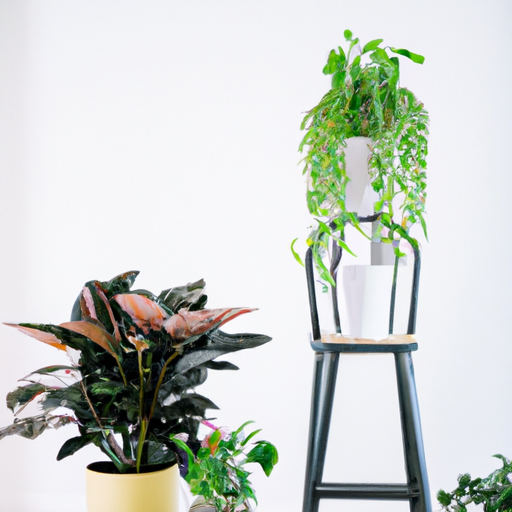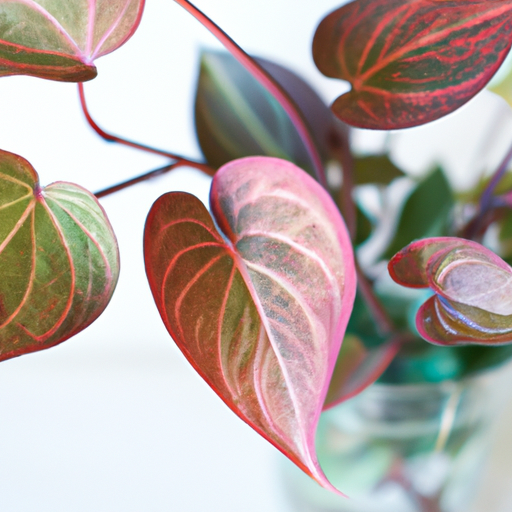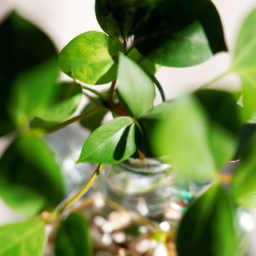
Are you looking to add some greenery to your space? Consider incorporating a floor plant into your home or office decor! Floor plants are a great way to bring life and vibrancy to any room, while also providing numerous health benefits. From improving air quality to reducing stress levels, floor plants are a versatile and stylish addition to any space. In this blog post, we will explore the different types of floor plants available, as well as tips on how to care for and style them in your home. So, let’s dive in and discover the beauty and benefits of incorporating a floor plant into your space!
Benefits of Having Floor Plants in Your Home
Welcome to our guide on the benefits of having floor plants in your home! Floor plants not only add beauty and life to your living space, but they also offer a range of health and wellness benefits. In this article, we will explore the many advantages of incorporating floor plants into your home decor.
Improved Air Quality
One of the most significant benefits of having floor plants in your home is their ability to improve indoor air quality. Plants naturally absorb carbon dioxide and release oxygen through the process of photosynthesis. This helps to purify the air by removing toxins and pollutants, such as formaldehyde and benzene, that are commonly found in indoor environments. In addition, certain plants, such as spider plants and peace lilies, have been shown to effectively filter out harmful chemicals and improve overall air quality.
By placing floor plants strategically throughout your home, you can create a healthier and more breathable living environment for you and your family. Not only will this help to reduce the risk of respiratory problems and allergies, but it can also boost your mood and productivity levels.
Furthermore, having plants in your home can increase humidity levels, which can be beneficial for those living in dry climates or during the winter months when indoor air tends to be drier. This can help to alleviate dry skin, throat irritation, and other discomforts associated with low humidity levels.
Stress Reduction
In addition to improving air quality, floor plants can also have a positive impact on your mental health and well-being. Studies have shown that being in the presence of plants can help to reduce stress, anxiety, and feelings of fatigue. The color green, which is abundant in plants, has been found to have a calming effect on the mind and body, promoting relaxation and a sense of tranquility.
By creating a green oasis in your home with floor plants, you can create a peaceful retreat where you can unwind and de-stress after a long day. The act of caring for plants, such as watering and pruning, can also be therapeutic and meditative, helping to promote mindfulness and a sense of connection to nature.
Furthermore, studies have shown that having plants in your living space can improve cognitive function and concentration, making you more productive and focused. The presence of plants can also help to create a sense of harmony and balance in your home, promoting a positive and uplifting atmosphere.
Enhanced Aesthetic Appeal
Aside from their health benefits, floor plants can also enhance the aesthetic appeal of your home decor. Plants add texture, color, and dimension to a room, creating a sense of warmth and coziness. Whether you prefer large statement plants or smaller potted plants, there are endless options to choose from that can complement your personal style and interior design aesthetic.
Plants can also serve as natural focal points in a room, drawing the eye and adding visual interest. By strategically placing floor plants in empty corners, near windows, or next to furniture, you can create a more inviting and visually appealing space. Additionally, plants can help to soften harsh lines and create a more organic and natural feel in your home.
In conclusion, incorporating floor plants into your home decor can have a multitude of benefits, from improving air quality and reducing stress to enhancing the aesthetic appeal of your living space. By carefully selecting and caring for plants that thrive in your home environment, you can create a healthier, happier, and more beautiful home for you and your family to enjoy.
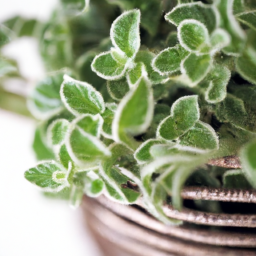
Choosing the Right Floor Plant for Your Space
Factors to Consider
When it comes to choosing the right floor plant for your space, there are several factors to consider. First and foremost, you’ll want to think about the amount of natural light that the plant will receive. Some plants thrive in bright, indirect light, while others prefer low light conditions. Take note of the lighting in the room where you plan to place the plant and choose a species that will thrive in that environment.
Another important factor to consider is the size of the plant. Make sure to measure the space where you plan to place the plant to ensure that it will have enough room to grow. Some floor plants can grow quite large over time, so it’s important to take this into account when making your selection.
Additionally, consider the care requirements of the plant. Some plants are low maintenance and require minimal watering and attention, while others may need more frequent care. Think about how much time and effort you’re willing to put into caring for your floor plant and choose a species that aligns with your lifestyle.
Popular Floor Plants
There are countless options when it comes to choosing a floor plant for your space, but some species are particularly popular due to their beauty and ease of care. One popular choice is the fiddle leaf fig, known for its large, glossy leaves and striking appearance. This plant thrives in bright, indirect light and can add a touch of elegance to any room.
Another popular option is the snake plant, also known as mother-in-law’s tongue. This plant is incredibly resilient and can thrive in low light conditions, making it a great choice for beginners or those with less-than-ideal lighting in their space. The snake plant is also known for its air-purifying properties, making it a great choice for improving indoor air quality.
If you’re looking for a plant that adds a pop of color to your space, consider the rubber plant. With its vibrant green leaves and easy care requirements, this plant is a great choice for adding a touch of nature to any room. The rubber plant thrives in bright, indirect light and can grow quite large over time, so make sure to give it plenty of room to spread out.
Caring for Your Floor Plant
Once you’ve chosen the perfect floor plant for your space, it’s important to provide it with the proper care to ensure its health and longevity. Make sure to water your plant regularly, taking care not to overwater or underwater. Most plants prefer to dry out slightly between waterings, so be sure to check the soil moisture before watering.
In addition to watering, it’s important to provide your floor plant with the proper nutrients to support its growth. Consider fertilizing your plant every few months with a balanced fertilizer to ensure that it has all the nutrients it needs to thrive. You may also want to occasionally dust the leaves of your plant to remove any buildup and allow it to photosynthesize more efficiently.
Finally, keep an eye out for any signs of pests or disease on your floor plant. Common pests include spider mites, mealybugs, and aphids, which can all cause damage to your plant if left unchecked. If you notice any signs of pests or disease, take action immediately to prevent further damage and keep your plant healthy.
In conclusion, choosing the right floor plant for your space involves considering factors such as lighting, size, and care requirements. Popular options include the fiddle leaf fig, snake plant, and rubber plant, each with its own unique characteristics and care needs. Once you’ve chosen the perfect plant, be sure to provide it with the proper care to ensure its health and longevity. With the right attention and care, your floor plant can thrive and bring beauty to your space for years to come.
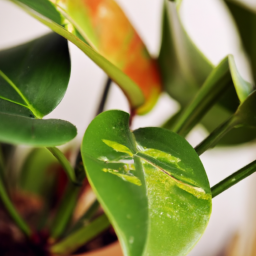
Caring for Your Floor Plant: Tips and Tricks
Choosing the Right Floor Plant
When it comes to choosing the right floor plant for your space, there are a few key factors to consider. First, think about the amount of light the plant will receive in its new home. Some plants thrive in bright, direct sunlight, while others prefer indirect light or even low light conditions. Make sure to choose a plant that matches the light levels in your space to ensure its health and longevity.
Next, consider the size of the plant and how much space it will need to grow. Some floor plants can grow quite large over time, so be sure to choose a plant that will fit comfortably in your space without overcrowding it. Additionally, think about the care requirements of the plant, such as watering frequency and humidity levels. Choose a plant that matches your ability and willingness to care for it to ensure its success in your home.
Finally, consider the aesthetic appeal of the plant and how it will complement your space. Choose a plant with a shape, color, and texture that will enhance the overall look of your room. Whether you prefer a lush, tropical plant or a sleek, modern succulent, there are plenty of options to choose from to suit your personal style and taste.
Watering and Feeding Your Floor Plant
Proper watering and feeding are essential for the health and growth of your floor plant. When it comes to watering, it’s important to strike the right balance – not too much, and not too little. Overwatering can lead to root rot and other issues, while underwatering can cause the plant to wilt and die. To determine when your plant needs water, check the soil moisture level by sticking your finger into the soil. If it feels dry to the touch, it’s time to water.
When watering your floor plant, make sure to use room temperature water to avoid shocking the plant’s roots. Water the plant thoroughly until the excess water drains out of the bottom of the pot, ensuring that the roots are evenly moistened. Avoid letting the plant sit in standing water, as this can lead to root rot and other problems.
In addition to watering, feeding your floor plant with the right nutrients is crucial for its health and growth. Choose a balanced, water-soluble fertilizer specifically designed for indoor plants, and follow the instructions on the package for best results. Feed your plant regularly during the growing season, typically spring and summer, and reduce feeding during the dormant winter months when growth slows down.
Pruning and Repotting Your Floor Plant
Pruning and repotting are important tasks to keep your floor plant looking its best and thriving in its environment. Regular pruning helps to promote healthy growth, remove dead or damaged foliage, and shape the plant to your desired size and shape. Use clean, sharp pruning shears to make clean cuts at a 45-degree angle, and remove any yellowing or browning leaves to encourage new growth.
Repotting your floor plant is necessary when it outgrows its current container or becomes root-bound. Signs that your plant needs repotting include roots growing out of the drainage holes, soil drying out quickly, or the plant becoming top-heavy and unstable. Choose a new pot that is one size larger than the current one, with good drainage holes and fresh, well-draining potting mix. Carefully remove the plant from its old pot, gently loosen the roots, and place it in the new pot at the same level as before. Fill in with fresh soil, water thoroughly, and place in a bright, indirect light location to help the plant recover and thrive in its new home.
In conclusion, caring for your floor plant requires attention to detail, patience, and a little bit of know-how. By choosing the right plant for your space, providing proper watering and feeding, and pruning and repotting as needed, you can enjoy a beautiful, healthy plant in your home for years to come. Remember to observe your plant regularly, adjust your care routine as needed, and enjoy the beauty and benefits that indoor plants bring to your space.
Let’s wrap up what we learned
Are you looking to add some greenery to your home or office space? Look no further than a floor plant! Floor plants are a fantastic way to bring a touch of nature indoors while also adding a pop of color and texture to your decor. These large, leafy plants can help purify the air and create a calming atmosphere in any room.
Floor plants come in a variety of shapes, sizes, and colors, making it easy to find the perfect plant to suit your style and space. From lush palms to tall fiddle leaf figs, there is a floor plant for every taste. Plus, caring for a floor plant is relatively low maintenance, making it a great option for those with busy schedules or limited gardening experience. So why not bring the beauty of the outdoors inside with a beautiful floor plant today?
Check Out These FAQs:
Q1: What are some popular floor plants for indoor spaces?
A1: Some popular floor plants for indoor spaces include the fiddle leaf fig, snake plant, rubber plant, and peace lily. These plants are known for their air-purifying qualities and aesthetic appeal.
Q2: How often should I water my floor plant?
A2: The watering frequency for floor plants can vary depending on the type of plant and the environment it is in. Generally, it is recommended to water your floor plant when the top inch of soil feels dry to the touch.
Q3: What are some tips for caring for a floor plant?
A3: Some tips for caring for a floor plant include providing it with adequate sunlight, ensuring proper drainage in the pot, and regularly dusting the leaves to allow for optimal photosynthesis.
Q4: Can I keep a floor plant in a low-light environment?
#### A4: While some floor plants can tolerate low-light conditions, most plants thrive in bright, indirect sunlight. If you have a low-light environment, consider choosing a plant that is known for its ability to thrive in such conditions, such as a snake plant or peace lily.
Q5: How can I prevent pests from infesting my floor plant?
A5: To prevent pests from infesting your floor plant, regularly inspect the leaves for any signs of pests, such as webs or small insects. You can also use natural remedies like neem oil or insecticidal soap to treat any pest infestations. Additionally, avoid overwatering your plant, as this can create a hospitable environment for pests to thrive.
Emily Bloomfield is an interior designer and horticulturist specializing in incorporating indoor plants into interior spaces. With a background in both design and plant science, Emily offers a unique perspective on creating harmonious living environments through the synergy of greenery and aesthetics. Her creative ideas and innovative solutions make her a sought-after authority in the field.

